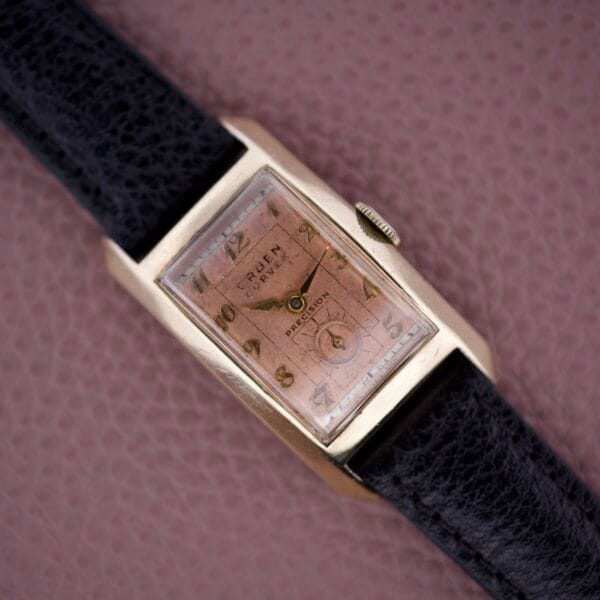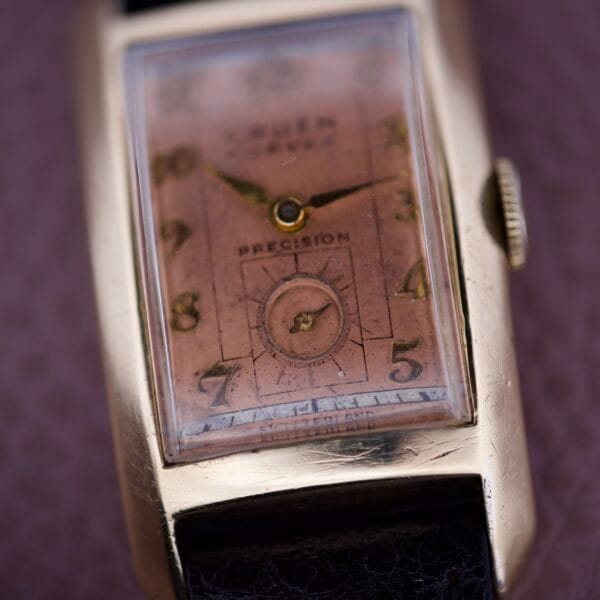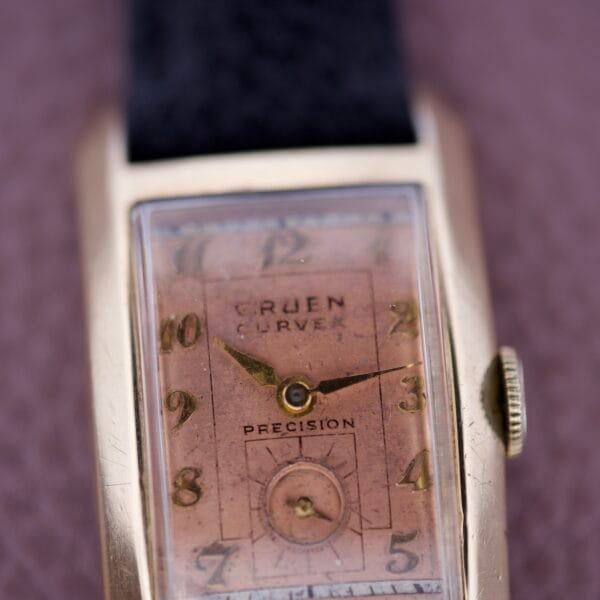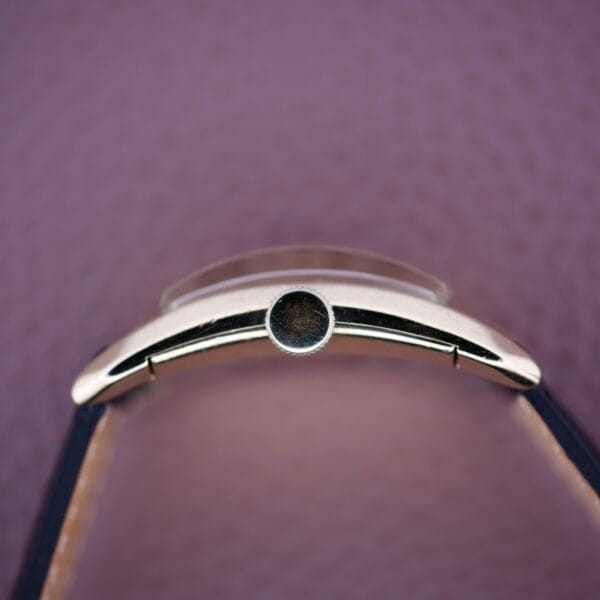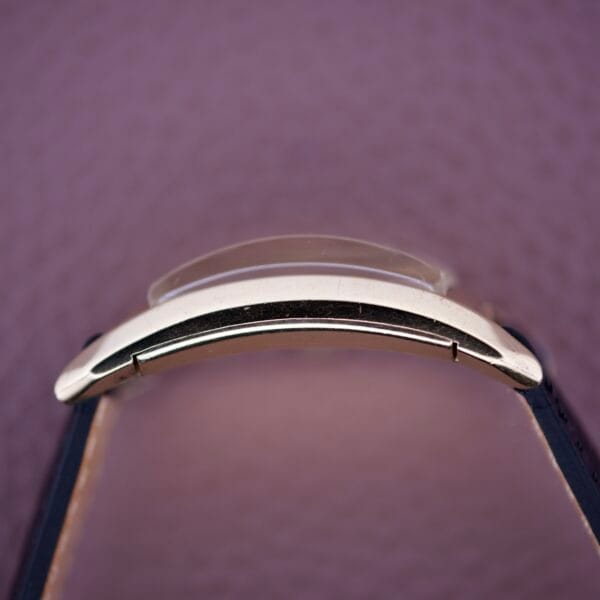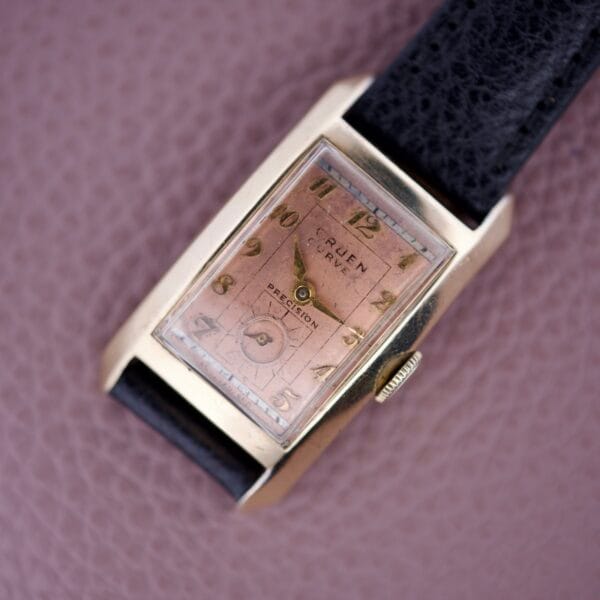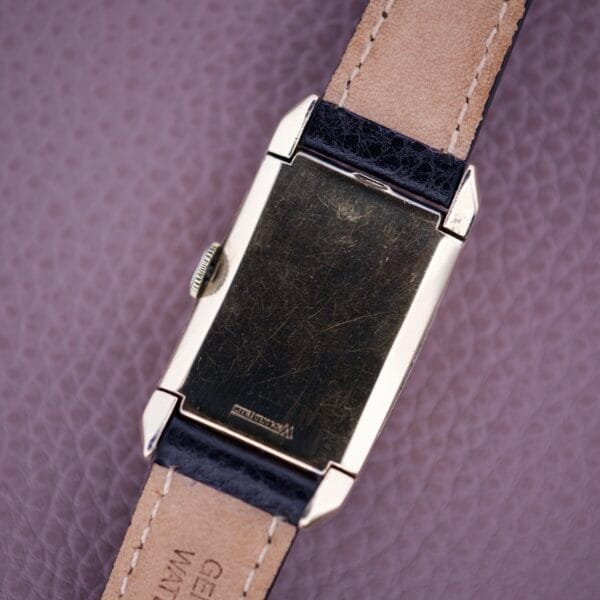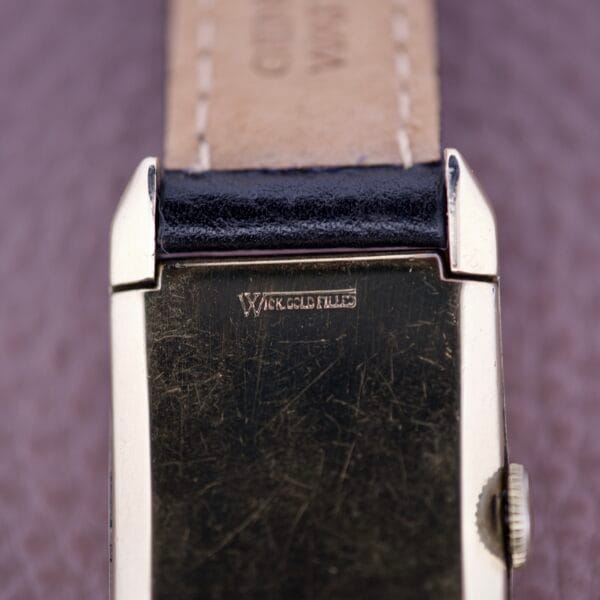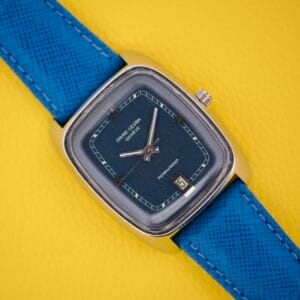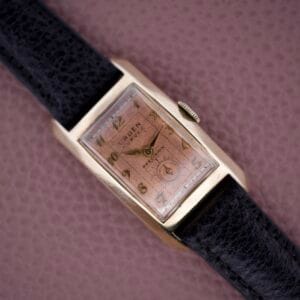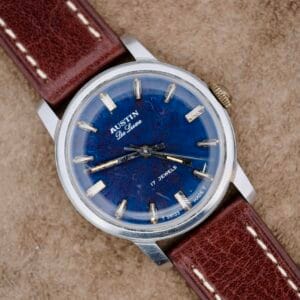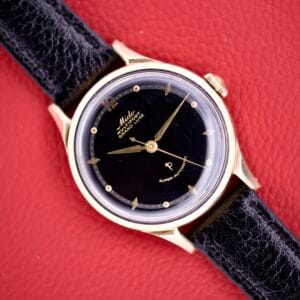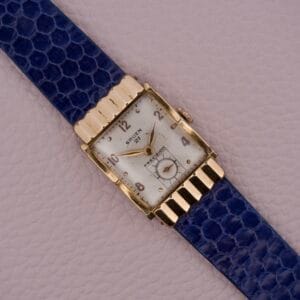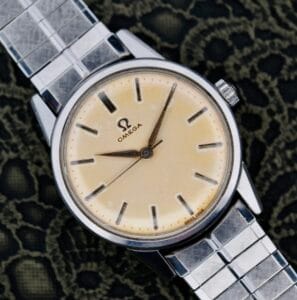In the history of horological design, there are a handful of watches so innovative and so iconic that they become legends. The Gruen Curvex is, without any shadow of a doubt, one of those watches. It is arguably the most famous and important American-designed wristwatch of the 20th century. Its genius was not merely aesthetic; it was a revolutionary piece of mechanical engineering that solved a fundamental problem. This particular example, with its stunningly patinated salmon dial, is a truly exceptional and soulful survivor from the golden age of Art Deco style.
First patented in 1929 and launched in the mid-1930s, the Gruen Curvex was a masterstroke. Other watchmakers were producing curved, rectangular watches, but they were forced to use small, flat movements inside, which limited their accuracy and size. Gruen’s brilliance, led by designer Emile Frey, was to create a proprietary movement that was actually curved to fit the ergonomic shape of the case. This patented innovation allowed for a larger, more robust, and more accurate movement to be housed within a watch that elegantly hugged the wrist. It was an instant sensation, becoming the definitive dress watch for stylish men and women throughout the 30s and 40s. The “Precision” signature on the dial was Gruen’s mark for their highest quality movements.
This Curvex from the 1940s is a particularly charismatic example. The elongated, gold-filled case is pure Art Deco elegance, with its sleek lines and subtly faceted lugs. But the immediate and undeniable star of the show is the dial. Originally a light copper or salmon color, it has aged and patinated to a rich, variegated rose-gold hue that is simply breathtaking. The dial features a full set of printed, stylized Arabic numerals, a handsome subsidiary seconds register, and a classic railroad minute track. The entire composition is perfectly preserved under a high-arched acrylic crystal that magnifies and distorts the view in the most charming way, a hallmark of these vintage rectangular pieces.

